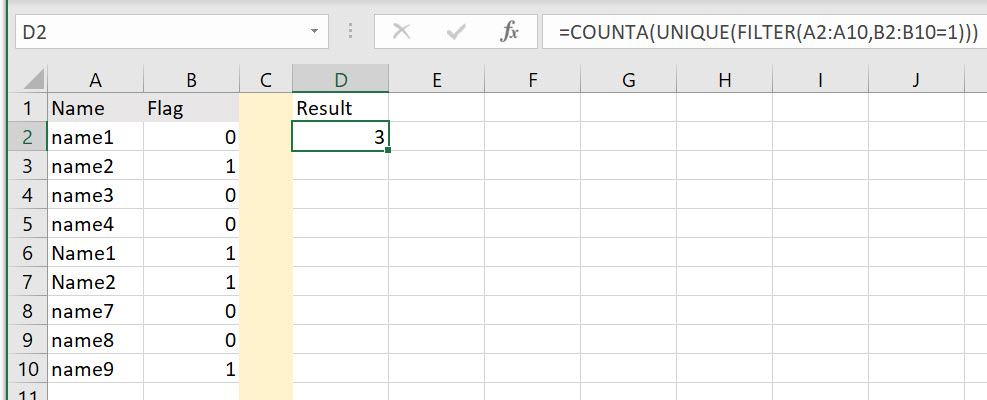Does it have to be a formula? A really easy way to do this is to may a pivot table out of columns A and B. Then set Column B as the filter field and Count of A as the values (you need to label columns A and B). Then A4 on the pivot sheet (at least in the default) should contain your answer. This would work for any size list and indeed would work when there are multiple conditions.
If it has to be a formula, does it have to be entirely so? If you are allowed to sort by A before your formula works, then how about this workflow. I'm not crazy about this and I suspect it could be improved.
1) Sort by A (ascending or descending ), then by B (descending)
2) In C each row of C put a formula like this:
=if (and(A2<>A1,B2=1),1,0)
C1 would be as follows:
=b1
Drag from C2 until the last row of your data (say c500).
3) Then count by summing C, =sum(c1:c500).
You can certainly can drag the formula below the rows of data (as long as you know the maximum number you'll need), it should return 0 for all the blank rows. Then as you add data to A and B the rest will update automatically. You will likely need to to resort the data too.
One nice thing about the pivot table solution is that it can grow automatically with your data set as long as you insert the new data within the rows of the existing data. No sorting required of course.



